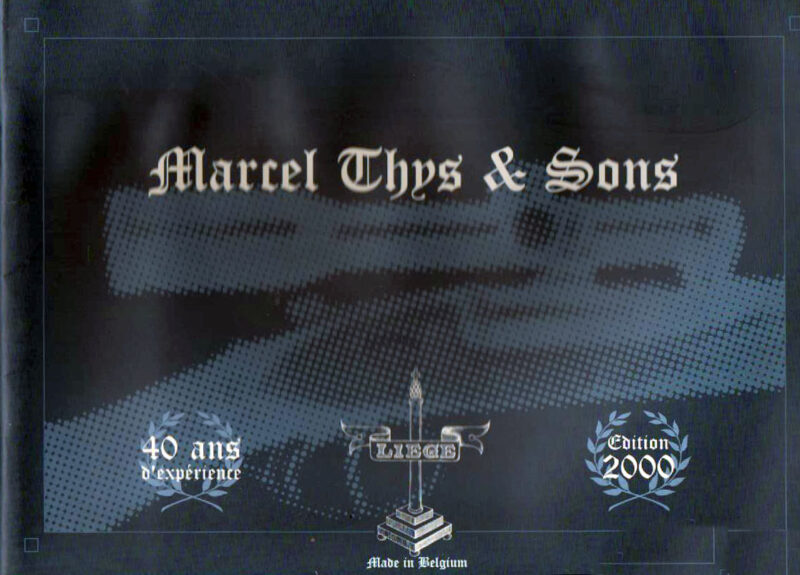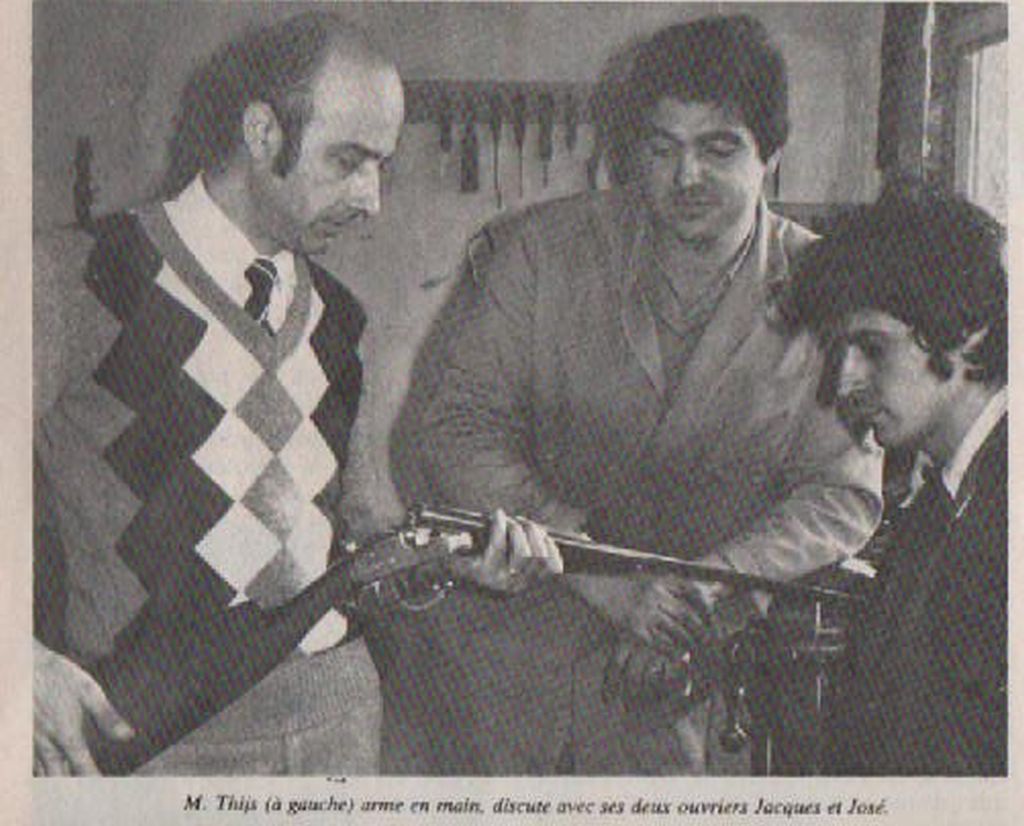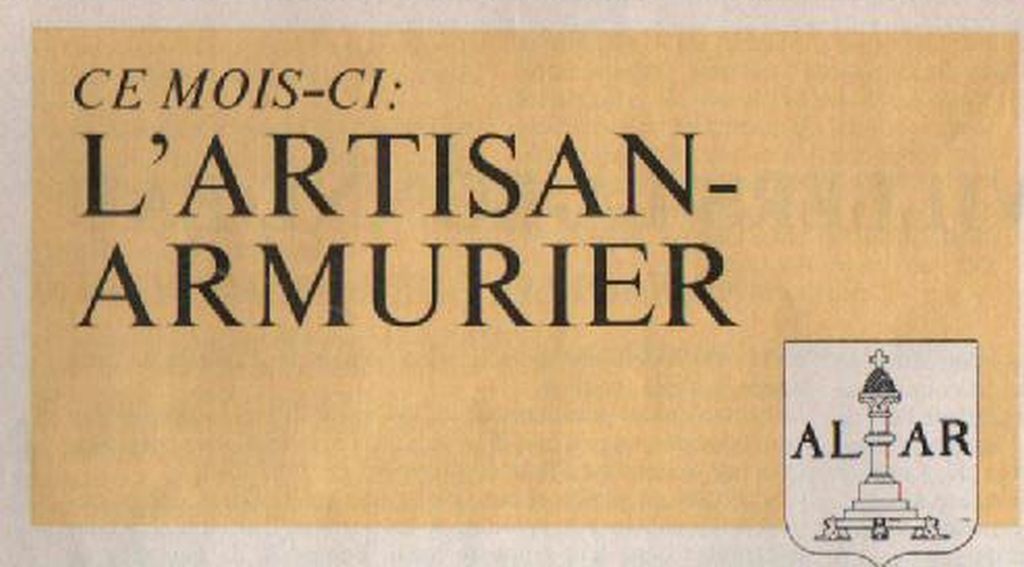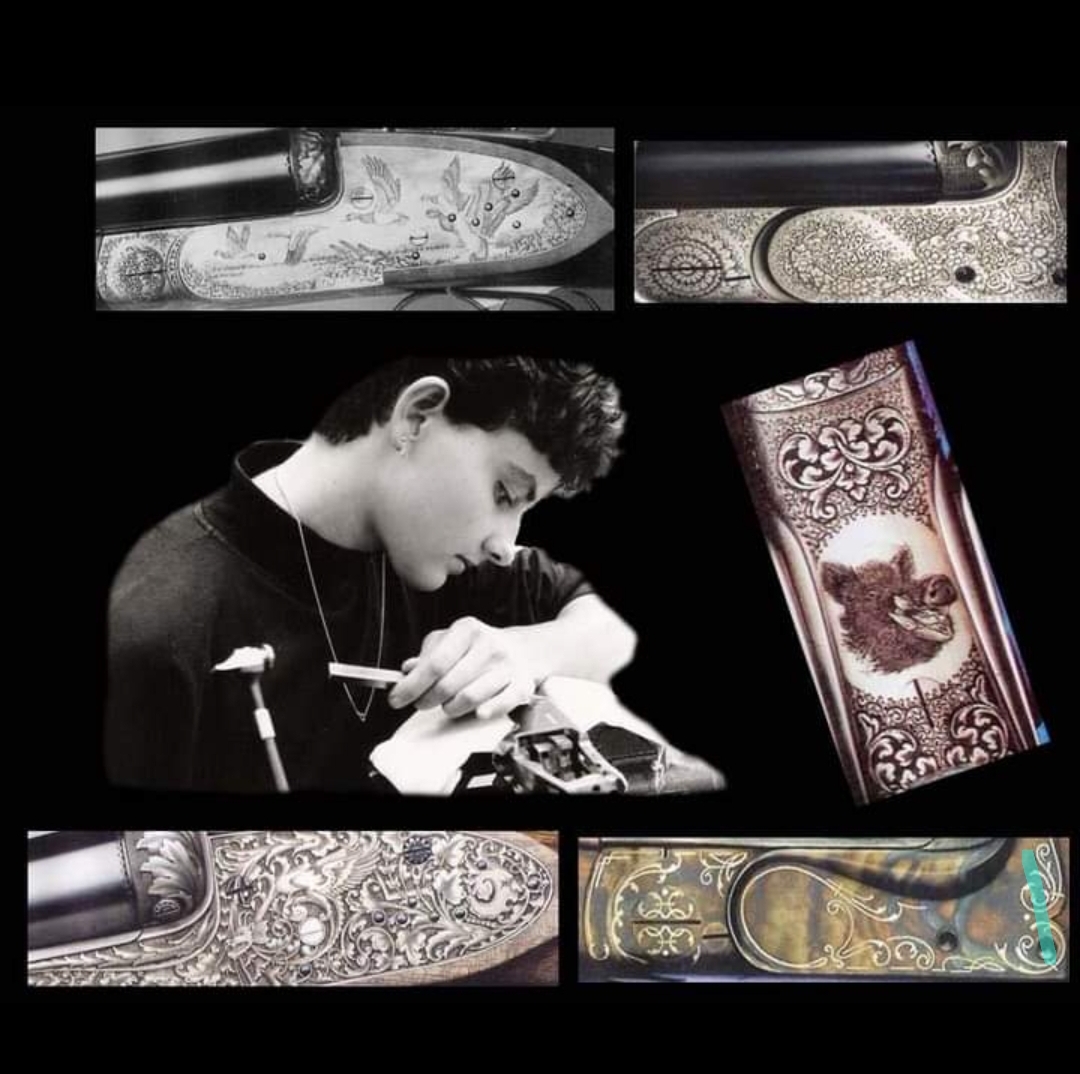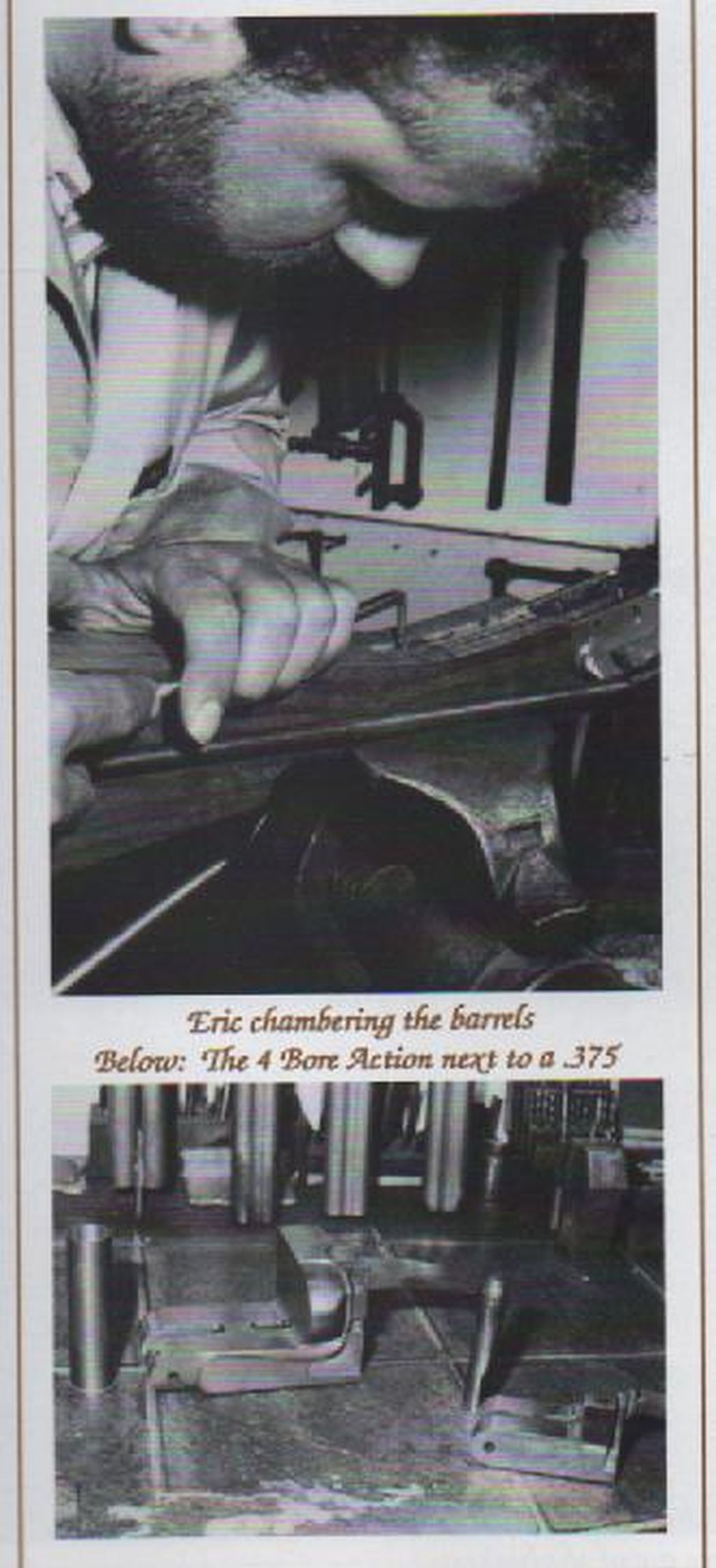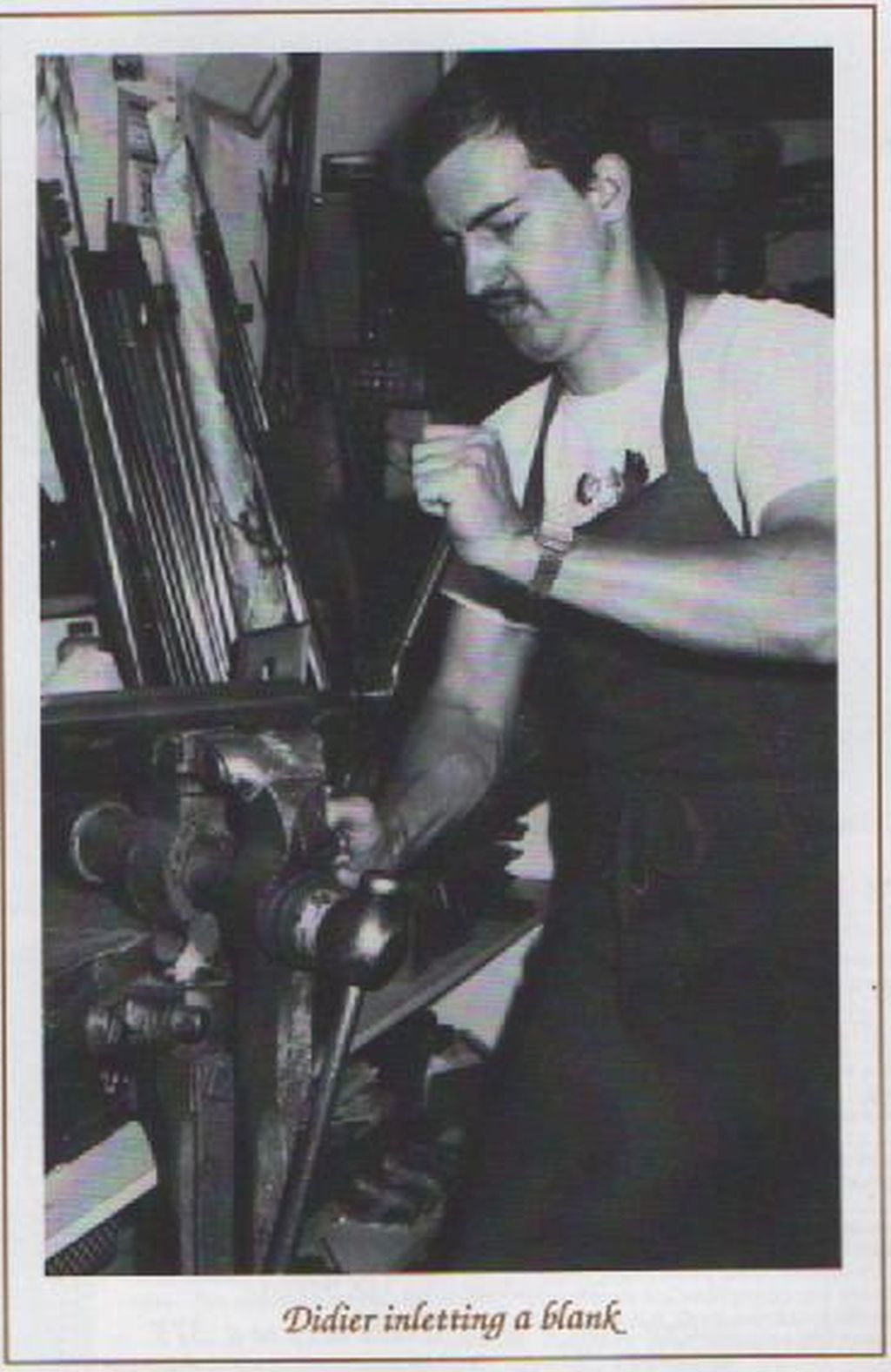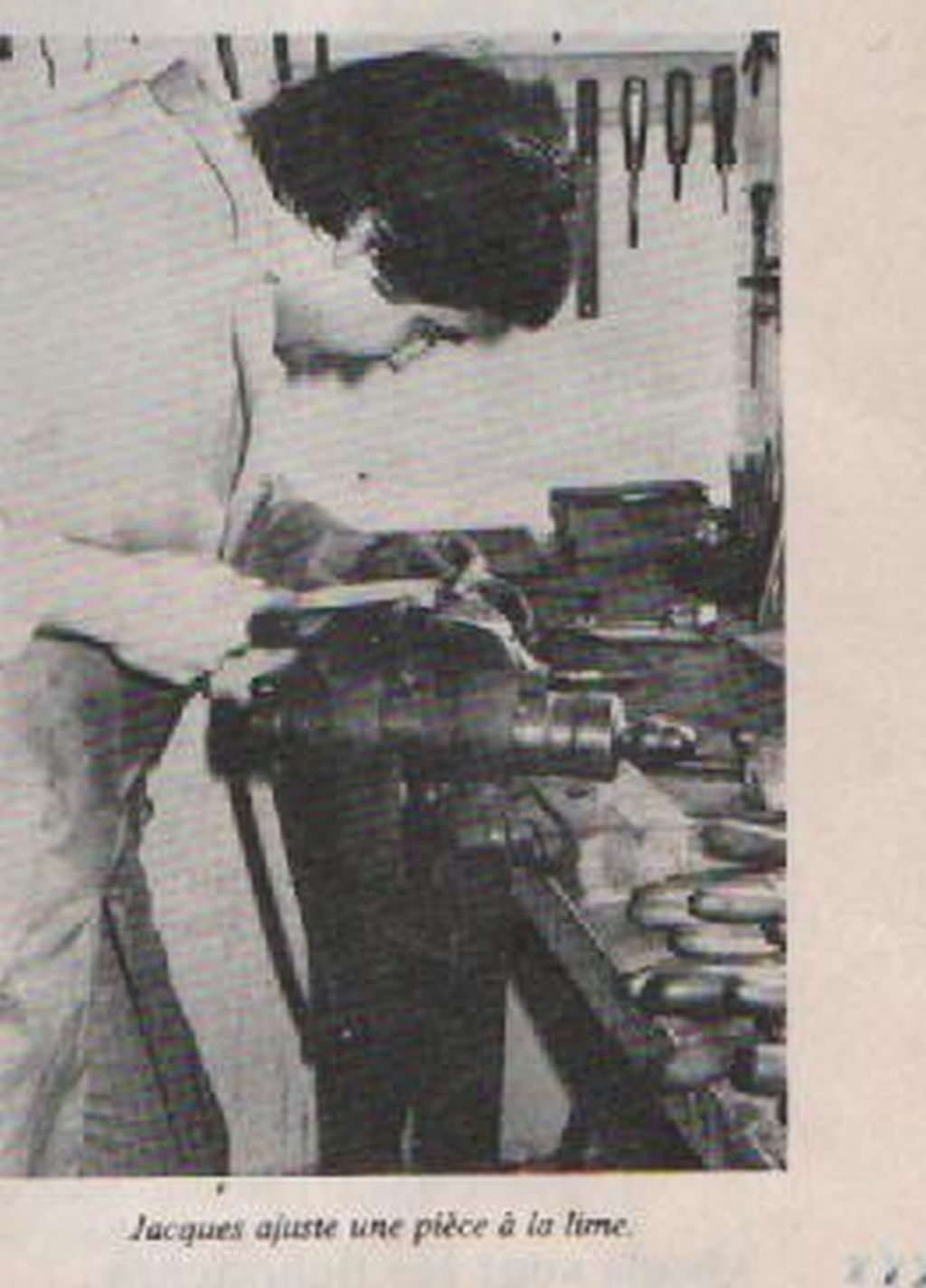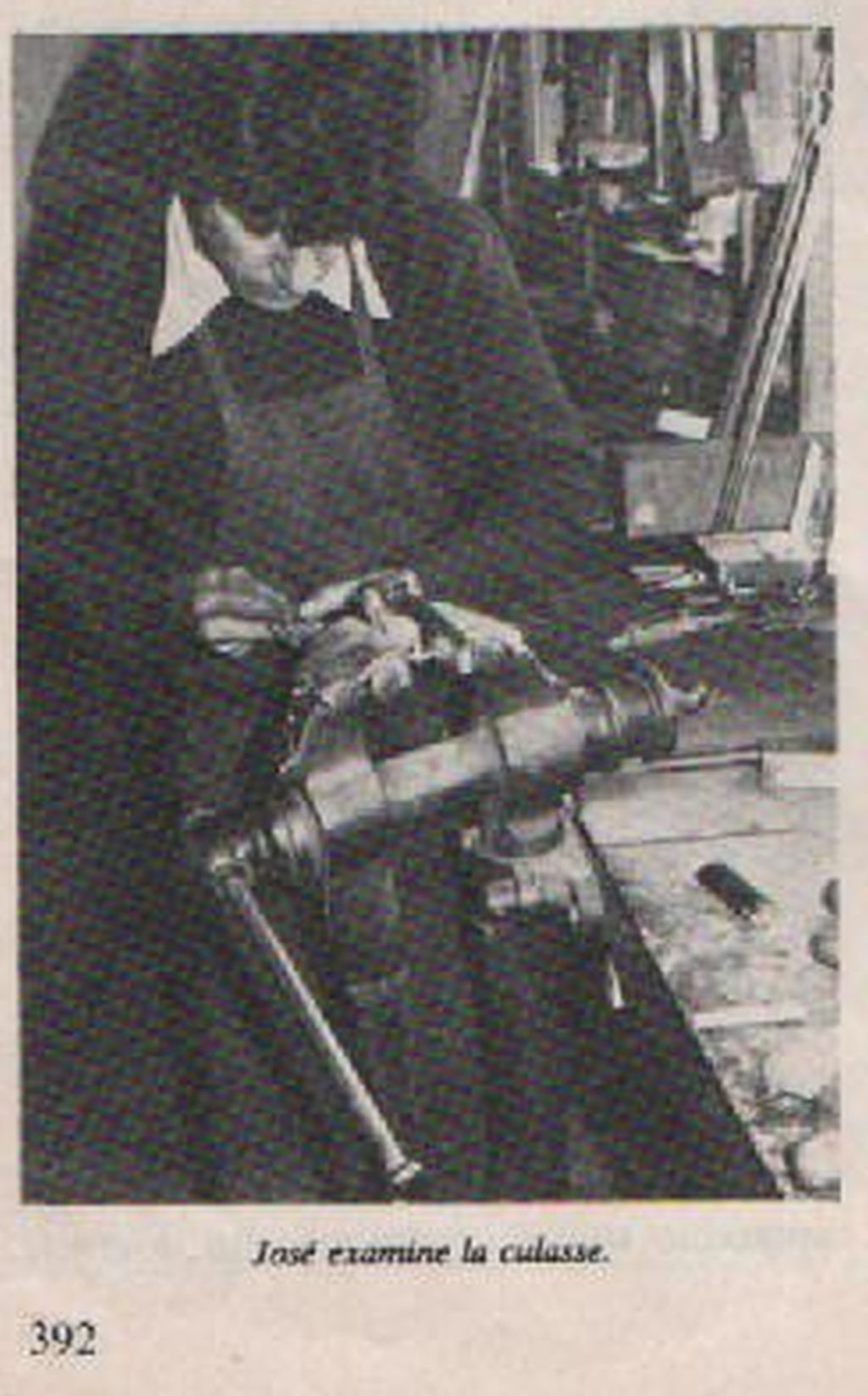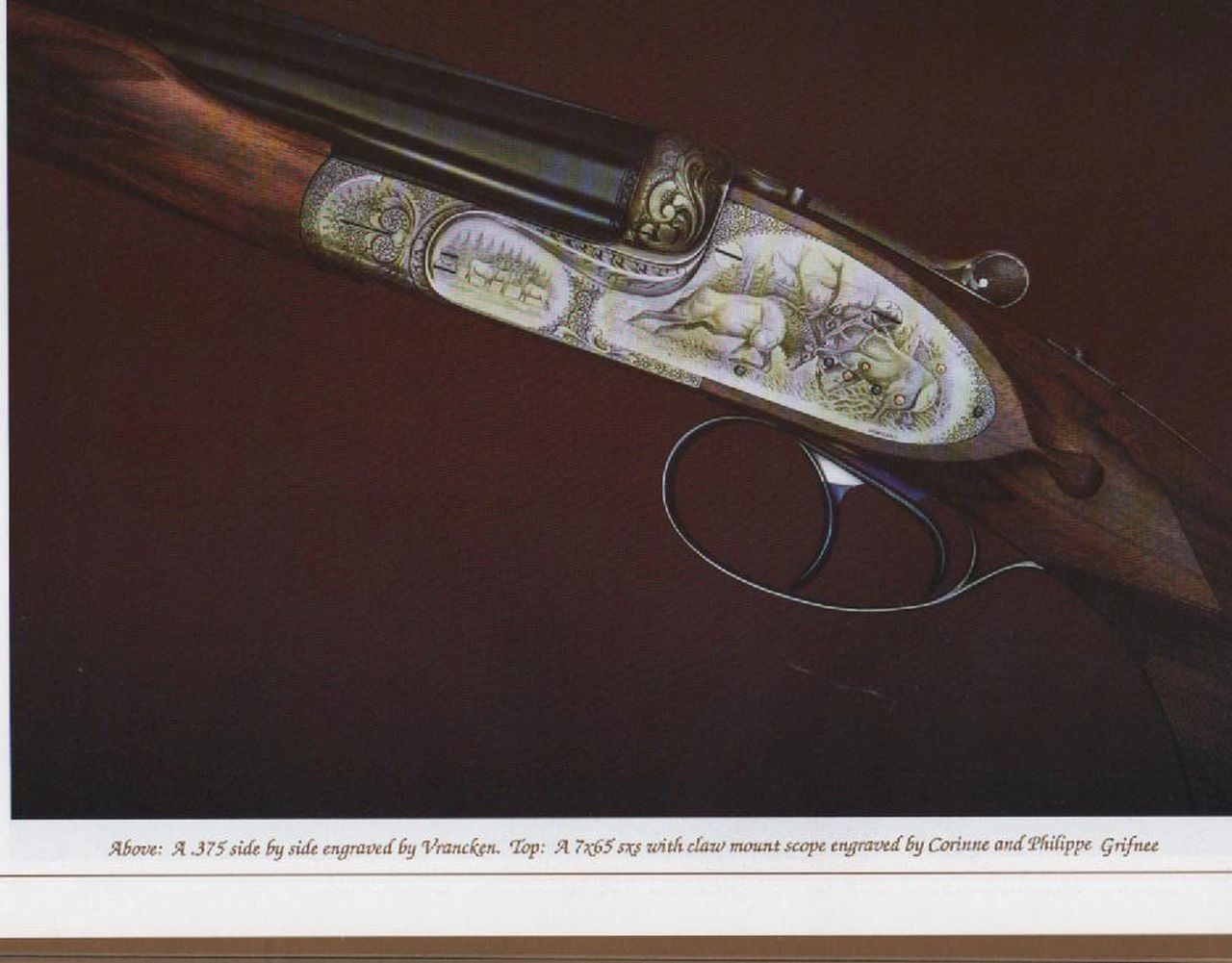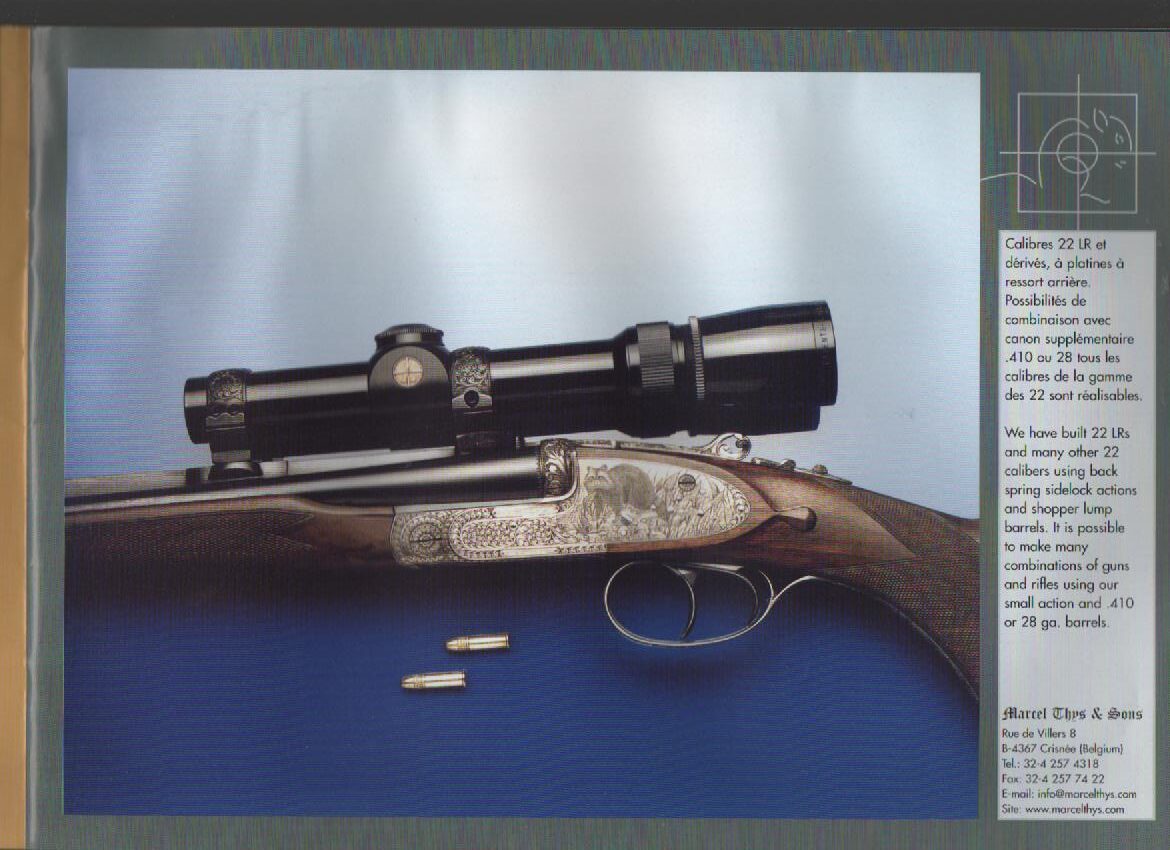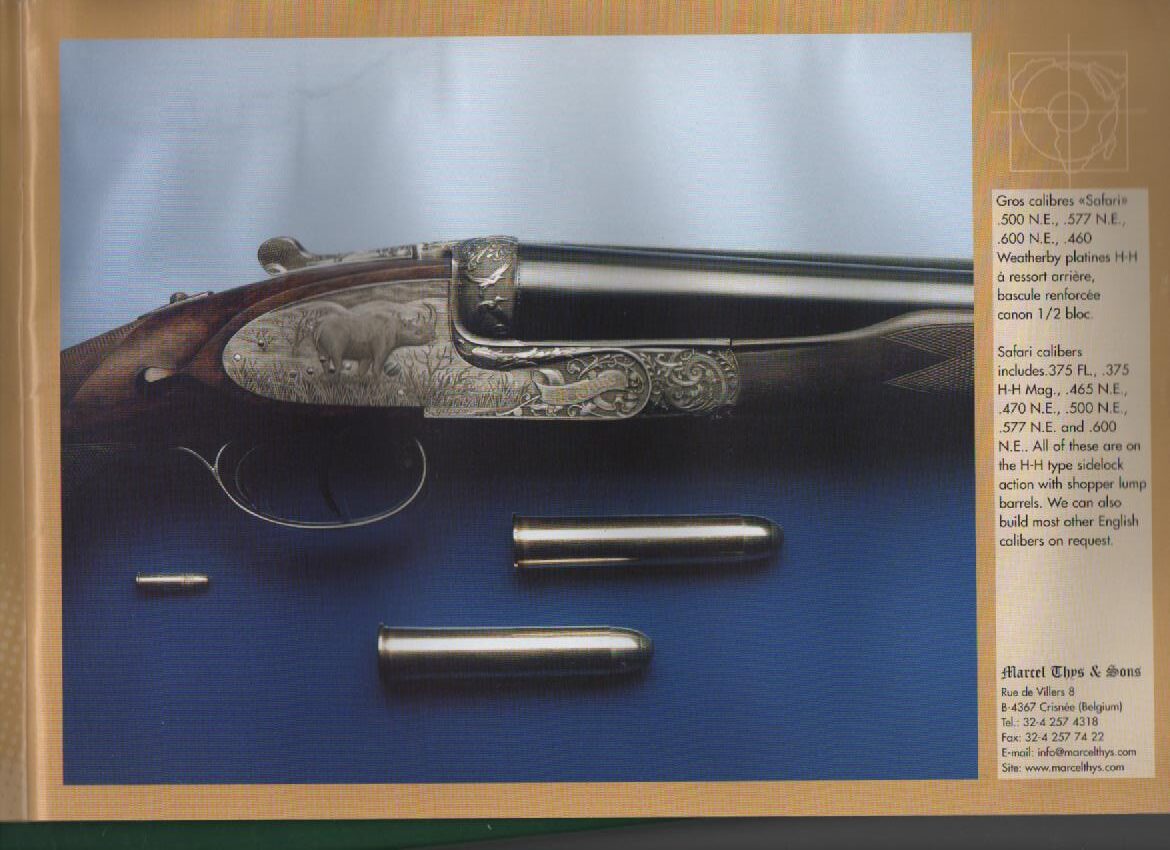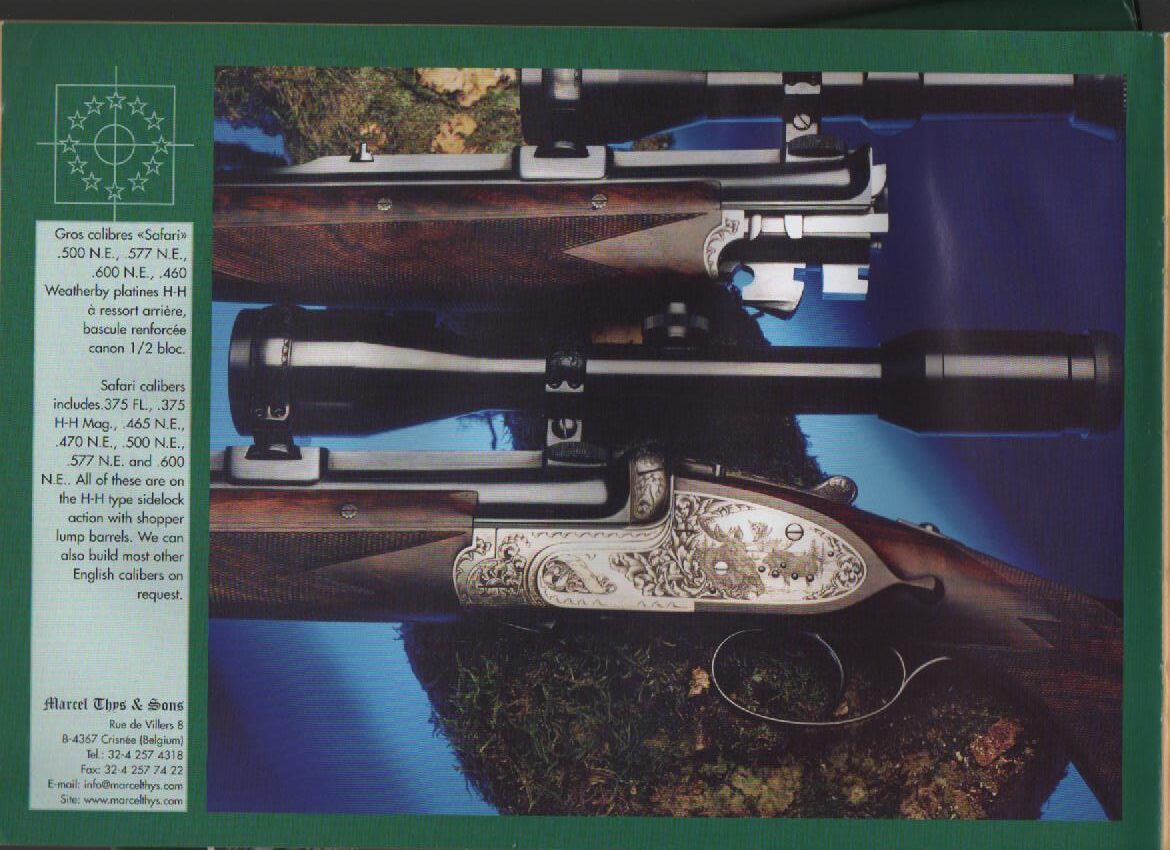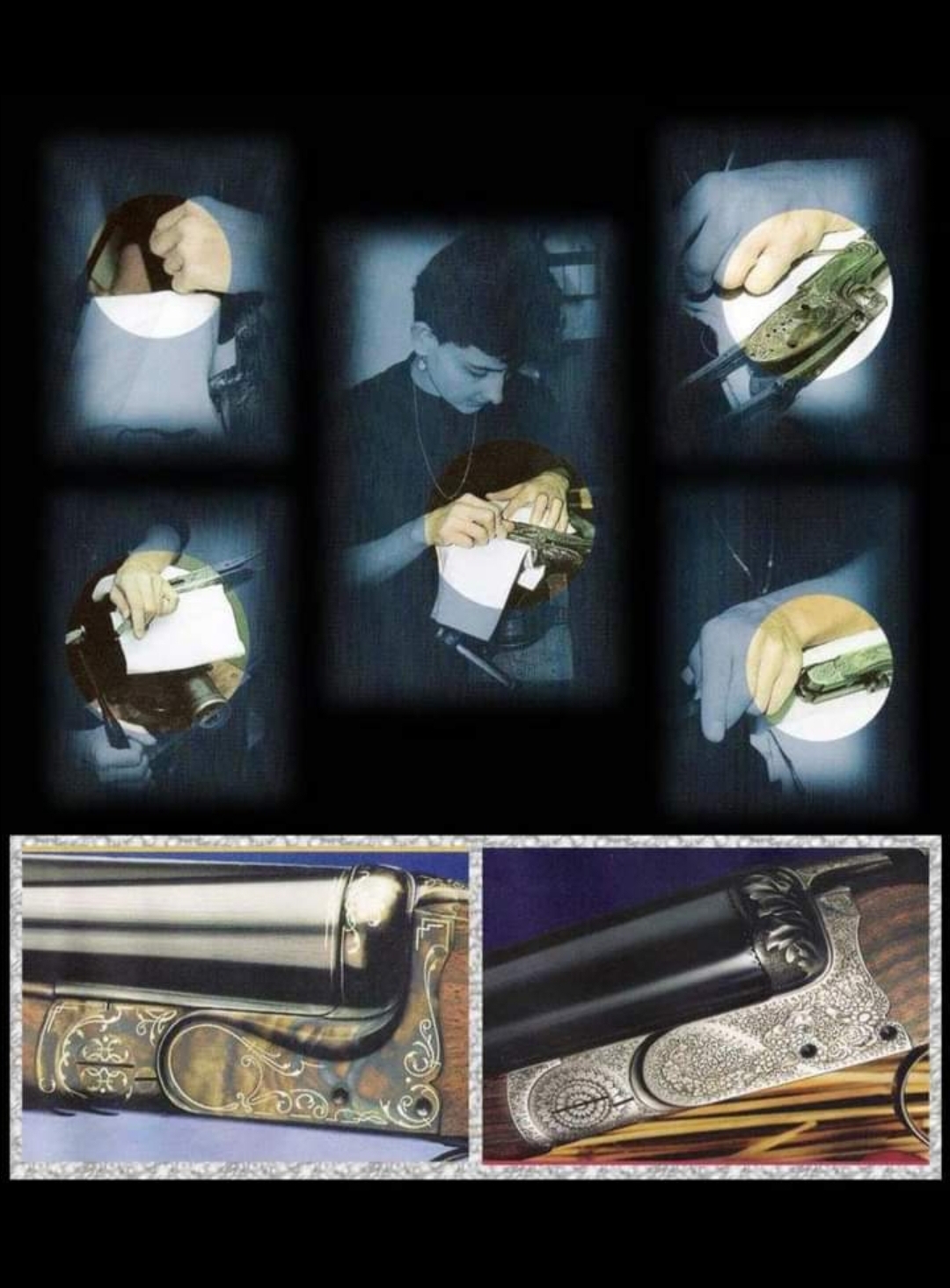Liège – Liège – Luik ,
the center of Belgian gunmaking has produced many important gunsmiths. But the great age of this trade is over and there are only a few protagonists of this great craft left. This makes it all the more important to keep the memory of the great masters of their trade alive.
My friend Marc Gettemans has written an article worth reading about one of the best Belgian artistic gunsmiths of the 20th century. It is a pleasure for me to publish this reminiscence of Marcel Thys on my blog:
Marcel Thys – Memories of a great gunsmith
by Marc Gettemans
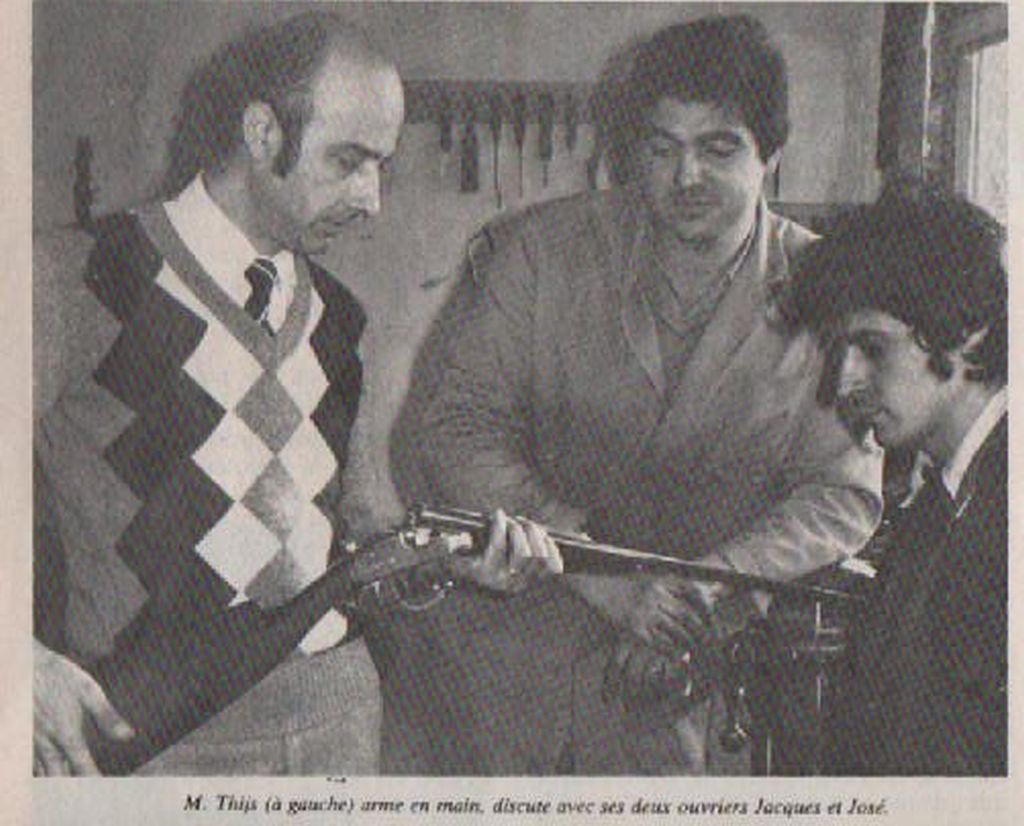
Sources for writing this reportage:
I used pieces from the interview Marcel Thys gave which was published in the paper of “Sociéte nationale terrienne” Jan Roosenburg also wrote a reportage about Marcel Thys in English in the DGJ (Double Gun Journal) of the winter 1992 issue. I took some info from that as well. Jan’s report is credible because he visited Marcel Thys and was shown around the workshop by Didier, who also speaks perfect English. My main source of information is Corinne, Marcel’s daughter. Corinne has given this reportage a booster through her accurate and reliable data. Guy Gadisseur & Michel Druart, in their book “Le qui est qui de l’armurerie Liégeoise, name Thys exactly with 1 line. In their place I would be ashamed of that.
Then there is Littlegun:
I took no info from that. Only I want to mention Cecile Flohimont with her engraving on one of the arms of Thys. I do not know this lady, but from the engraving I judge that she is very talented. I myself do not have any info on Marcel Thys in my archives. I did have the printed catalogue of 1992 on the arms of Marcel Thys in my archives, but I let myself be endeared when I had an American visiting me and gave him this catalogue (I acknowledge that now as a mistake) I have found afterwards that a reprint of this catalogue is on offer on the website of “CORNELL PUBLICATIONS” I was also unaware that another special catalog for the 40th anniversary and experience of Marcel Thys was printed in 2000. I was fortunate to receive this catalog from Corinne (daughter of Marcel).Writing a decent report is not always easy. I had intended to write about Marcel Thys in 2012. I was then no longer active in professional life and should have found the necessary time to do so. Why I shelved it I cannot remember, apparently I had other priorities then. Now we are 12 years later and gathering info around this artisanal Liege gunmaker has become increasingly difficult. Still, this report will be my showpiece, along with a previous report on the B 25, but that’s something completely different. An acquaintance of mine also gave me the email address of Didier Thys, whom I contacted several times with a request for information but who never answered me. I then took my courage and contacted the municipality of Crisnée. There, I was helped by the first alderman, Alain Materne of the administration of this municipality. This good man put me in touch with Thys’ daughter, Corinne. I have her email address and data but I cannot and will not mention it here.
Corinne lives next door to her father, who is now 83. Marcel’s two sons, Eric and Didier, have cut off all contact with their father for years. I do not know the reason or cause and do not want to know, it is a family matter. It does not affect the writing of this reportage It is also justified that I start with a little family history. This info comes from the above mentioned newspaper of “Sociéte nationale terrienne” where Marcel Thys gave permission to publish an interview with him.
Marcel Thys:
” I am a courageous person from Liège born in Hognoul on December 10, 1941. I married a girl from Crisnée, Nicole Schoenmakers on May 18, 1962. We have 3 children; Eric,Corinne and Didier.”
When asked how Marcel came to become a gunsmith, Marcel gives this clear answer:
“At the age of 12, my mother accompanied me to fill out the registration forms for a Liege carpentry school, it never came to pass. And a little further on, we stood in front of the entrance to the Liege school of arms. My mother then said to me: what if you became a gunsmith. No sooner said than done I had no problem accepting this turn in my new career, because from my earliest childhood I had a real passion for all weapons. So I did 2 years of apprenticeship and then 2 more years of specialization.”
Marcel emphasizes that our Liege school of arms enjoys an international reputation, along with that of Ferlach in Austria, which is the only world school of its kind. So there is a very diverse school population, all foreign nationalities are represented there. This very famous school was founded in 1896 under the leadership of several talented Liege gunsmiths who also wanted to ensure the renewal of a specialized workforce of quality and essential to the craft of gunsmithing. What opportunities does this school offer ? There are still employment opportunities with some small craft gunsmiths and with F.N., and talented graduates often find employment abroad. It should be noted, however, that learning the trade takes many years after graduation. Therefore, because of the high qualification, the gunsmith must wait several years before he can earn a good income. Many young people today do not have that patience and often prefer to earn more in other mechanical workshops. In reality, this is a miscalculation because the professional value of a contemporary gunsmith only increases with age.
“At the age of 16, at the end of my 4 years of studies, I joined A. Francotte on August 1, 1958, where I learned the trade in the best possible way for 9 years until 1967. I was previously domiciled at Ans, 43 Rue Florent Pirotte. Thanks to the technical and financial support of the “Sociéte nationale terrienne”, I was able to purchase a 632-square-meter plot of land here in Crisnée- Kemexhe. There I was able to build my private home and my studio, adjacent to it. So my private address and my studio have always remained at the same address, Rue de Villers, 8 4369 Crisnée. It is of the utmost importance that an armurier does not have to move from his private address to his workshop. Gradually I established my own “isi” in Crisnée, while pursuing a career as a teacher at the school of arms in Liege. In 1967, I participated in a public call to become a professor at this Liege school of arms and succeeded. So since 1967 I have always taught 30 hours per week , or 6 hours per school day as a teacher in this weapon school. I also kept that up for 27 years until 1994. In turn, my 3 children have also developed the gunsmithing “virus” and have a passion for beautiful handmade weapons. As a result, all 3 of them graduated as gunsmiths from the same school where I was a teacher.”
That can safely be called unique. Nowhere in the world will you find in a gunmaking shop, father and the three children working together.
Eric Thys planned to study veterinary medicine, but married his wife Anne quite early. So he soon had to earn a living to ensure his family’s survival. Eric joined his father after graduating from arms school in 1979. Corinne the younger sister of Eric, followed the same path and chose the engraving department for a 4-year degree. She too left with great distinction and later joined her father in the workshop at the age of 20. Finally, we must mention Didier who went to arms school when he was 13 years old. He was immediately interested in woodworking. So the whole Thys family found themselves with a common passion,a vocation even, with a work chosen and performed with heart and soul. Eric; gunsmith, Corinne engraver and Didier woodworker. This collaboration allowed the company to launch itself on international markets and continued to expand thanks to the impeccable quality of its finished products, shotguns; double- rifles……etc.
Marcel did not shy away from any challenge, whatever the customer asked or wanted he could realize. Marcel’s function then was more advisory, guiding and controlling every phase of the work. In any case, Marcel was not inferior to the famous and best known world brands such as Holland & Holland, Purdey, Boss, Rigby and Lebeau-Courally. This reportage would be incomplete if we did not let Marcel speak here and reveal some pithy details of the gunmaking process for us. Here are what I have found important enough to mention and I use Marcel’s words: the gunsmith must have a mechanical attitude, be precise, determined, patient, focused and demanding regarding the quality of the parts manufactured. The artisan manufacture of a hunting weapon consisting of some 60 to 80 parts involves more than 20 different but complementary professions. We should also not forget that on Jan. 1, 1971, VAT came into effect and many artisan gunmakers got into trouble. Added to that is the fact that our politicians never protected the artisan gunmakers and the “know how” of these people. Some gunsmiths, after graduating from the gun school, went to perfect their skills with Marcel . I am going to list two who are still active, one in our country namely BOB GOORMANS, gun- and kolvenmaker 3650 Dilsen-Stockem, Bob gained 2 years of experience in Marcel’s workshop, his website is attached: https://bobgoormans.be/ another one in our neighboring country, France, l’Atelier de Sologne, François TRICQUENAUX. His website is also attached. https://latelierdarmurerie.wixsite.com/latelierdarmurerie We are now talking about ALAR (Armuriers-Liégeois- artisans- réunis), the trademark of Marcel Thys. It is in the French language, but proper names, street and place names should not be translated. All arms that left Marcel’s workshop from 1976 onwards bear this trademark circled in capital letters. ALAR was founded in 1976 with the intention of adding value to and protecting handmade weapons. I know there have been misunderstandings, there are people who attribute BELGUN to Marcel outside of ALAR, this is not so. BELGUN was created by Antoine Cordy, also with the intention of protecting and adding value to artisanal gunmaking.Marcel with his partners Henry and Laslo Buday developed and patented a simpler and more reliable production system for lost wax casting cylinder heads. It is a process known in other applications but we were the first to apply it in artisanal gunsmithing. Besides Marcel and the three children, there were also twoemployees Jacques & Jose (photo of both attached)
The total annual production of Thys was about 20 guns, most of which were exported to France, Germany but also across the ocean to America. Marcel also worked for other Liege gunmakers and also for F.N. for the “special order” guns department, better known as the “Costum shop ” All of Marcel’s guns were lifted to the highest level by talented engravers, then we must speak first of all about his talented daughter Corinne, but at the request of the customer also Alain Lovenberg, who engraved on a regular basis for Lebeau-Courally, Vrancken Louis, recognized engraver for F.N. from 1946 to 1977 and deceased in 1983, were also engraved. Philippe Grifnée (also now deceased) engraved regularly for Purdey, Delcour René, was a teacher of engraving until 1992. Marcel Thys has a penchant for side-lock double-barreled rifles in all calibers. Each weapon is a work of art in itself. It is not my intention to quote all possible combinations here, but one is still more than worth mentioning Marcel has made several 4 bore SxS side lock Double Rifles and I managed to find one that was sold by the U.S. gun auction house RIA (info attached) https://www.rockislandauction.com/detail/87/518/marcel-thys-sons-4-bore-sidelock-double-rifle The weapon was sold on Dec. 9, 2022 for 35,250 U.S. dollars plus auction fees. For the non gun connoisseur a little more explanation about such weapon: a 4 bore (rifle) has a bullet head of 1,000 grains, 1 grain is 0.064799 grams so 1,000 grains roughly corresponds to 64.80 grams. If the weight of such a bullet head has to pass through the barrel, there must be a strong load behind it and the shooter has to reckon with a considerable recoil.
I have resolved not to mention gun prices here either, why I do that is very simple to explain. Each gun is a work of art in itself and the price is directly proportional to the wishes of the future owner. Also, the price and difficulty of the engraving determines the final price.. It is not unusual for a top gun to put in about 800 hours of work engraving. That being said, it is clear to all that “John with the hat” was not a customer with Marcel. The wait time to receive the finished weapon ranged from 12 to 18 months depending on what I wrote above. This is also the same waiting time of other famous gunsmiths I have listed here in this report. Second-hand weapons by Marcel Thys, are rare to find. There is an explainable reason for this. Most of Marcel’s guns are safely stored with collectors as an investment. These collectors regard them as valuable paintings that they can admire and touch, but they will never be used to shoot. Of course, there are a number of Marcel’s weapons that are used intensively for hunting anywhere in the world and for any kind of game.
In 2002 Marcel Thys stopped the gunmaking business, the exact reasons for this will always remain within the Thys family and I will make no attempt to find out. The unfinished weapons were sold both to Belgian and French gunmakers and presumably to other countries as well.

